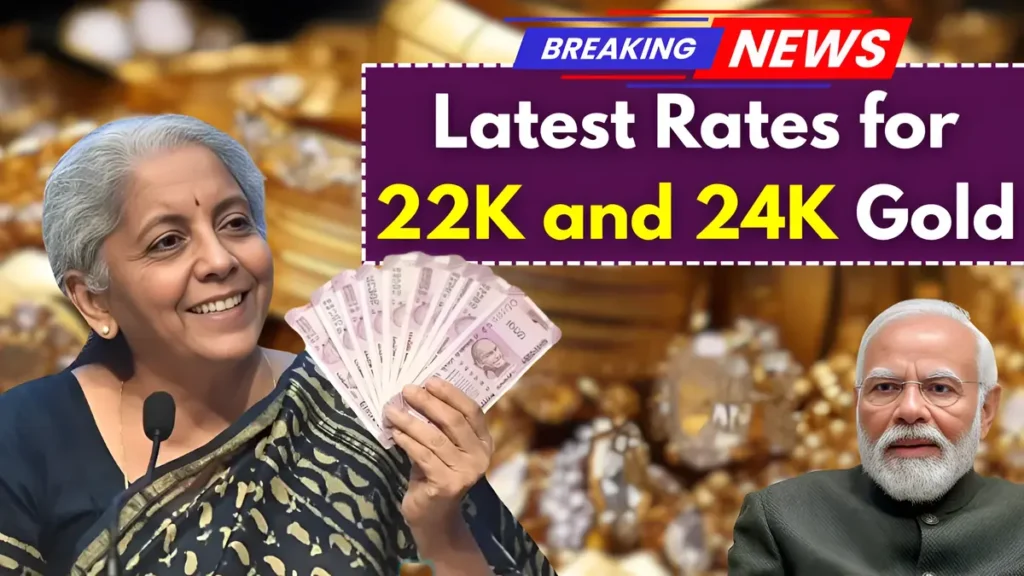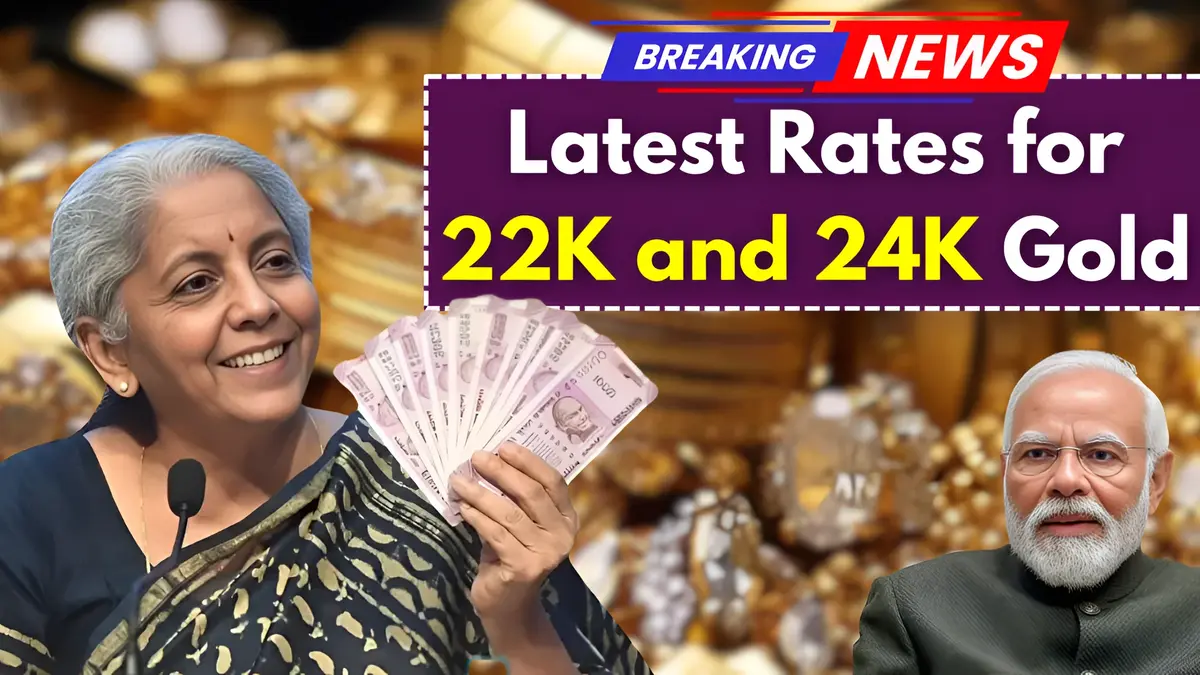The precious metals market faced a sharp decline today as gold and silver prices dropped unexpectedly. This sudden fall has taken many by surprise, especially investors and jewelers who closely watch these rates for 22K and 24K gold. Historically, gold and silver have been safe havens during uncertain times, but today’s market movements tell a different story. Understanding the current prices and the reasons behind this plunge is essential for anyone involved in buying, selling, or investing in these metals.

Current Gold Price Trends
Gold prices for both 22K and 24K purity levels have dropped considerably. The 24K gold, which is pure gold with nearly 100% purity, saw a significant price reduction. Since it is the standard for investment and pure gold bars, any change here impacts the entire market. Meanwhile, 22K gold, containing about 91.6% pure gold, also saw a downward price correction. This form is popular for jewelry due to its strength and appealing color, so changes in its price affect consumer buying habits directly.
The decrease in gold prices is not only affecting investors but also the jewelry market, especially in regions where gold is a cultural and economic mainstay. Jewelers are now faced with the challenge of adjusting prices and managing inventories bought at higher costs. Meanwhile, investors are revising their strategies in response to the sudden volatility.
Silver Price Fall and Its Impact
Silver has also experienced a notable price drop alongside gold. Often considered a more affordable precious metal, silver is used extensively in both industrial applications and investment portfolios. The decline in silver’s value adds pressure to industries that rely on it and causes concern among investors who diversify their holdings between gold and silver.
The price drop in silver mirrors the overall negative sentiment across the precious metals sector. For many investors, the combination of falling gold and silver prices signals caution, as it may reflect changes in economic outlook or market confidence. The industrial demand for silver also plays a role, as any slowdown in manufacturing can reduce silver’s value further.
Reasons Behind the Price Drop
Several key factors have contributed to the plunge in gold and silver prices today. One major driver is the strengthening of the US dollar. When the dollar rises, it typically makes gold and silver more expensive for holders of other currencies, reducing demand. This inverse relationship often results in price drops for precious metals.
Another reason is the recent positive economic data, which indicates stable inflation and stronger employment figures. These indicators lessen the appeal of gold and silver as safe havens, encouraging investors to move funds toward riskier assets like stocks. Additionally, rising interest rates, especially in the US, attract investors to government bonds that offer better returns compared to non-yielding metals.
Overall, the combination of a stronger dollar, improved economic outlook, and higher interest rates has dampened demand and pressured prices downward.
Challenges for Investors and Jewelers
The current fall in precious metal prices brings both challenges and opportunities. Investors holding physical gold or silver are facing losses on paper due to reduced market values. However, this dip can be an opportunity for new buyers to enter the market at lower prices.
Jewelers are navigating a tricky landscape as well. Those with inventories purchased at higher rates may see squeezed profit margins. On the other hand, more affordable gold and silver prices might stimulate consumer interest, potentially increasing sales volume over time. Balancing these effects is crucial for maintaining business stability.
Despite short-term concerns, long-term investors often view such dips as normal market corrections. Precious metals have historically bounced back after downturns, reinforcing their role as reliable assets in diversified portfolios.
Future Outlook for Precious Metals
Market watchers are closely observing upcoming economic reports and central bank policies to gauge future price movements. Geopolitical tensions or unexpected events can quickly change the demand for safe-haven metals. Additionally, seasonal buying patterns, especially in countries with high gold consumption during festivals or weddings, could influence prices soon.
Experts advise staying calm during such periods of volatility and avoiding rash decisions. For investors and consumers alike, understanding the broader economic environment and the cyclical nature of precious metals markets is key to making informed choices.
Conclusion on Price Decline
Today’s sharp decline in gold and silver prices has created uncertainty but also opportunities. The latest rates for 22K and 24K gold reflect this downturn, impacting investors and jewelers worldwide. Economic factors like the strong US dollar, stable inflation, and rising interest rates have driven this move.
Disclaimer: The information provided is for general awareness only and does not constitute financial advice. Prices may fluctuate rapidly. Always consult a qualified expert before making investment or purchase decisions.
